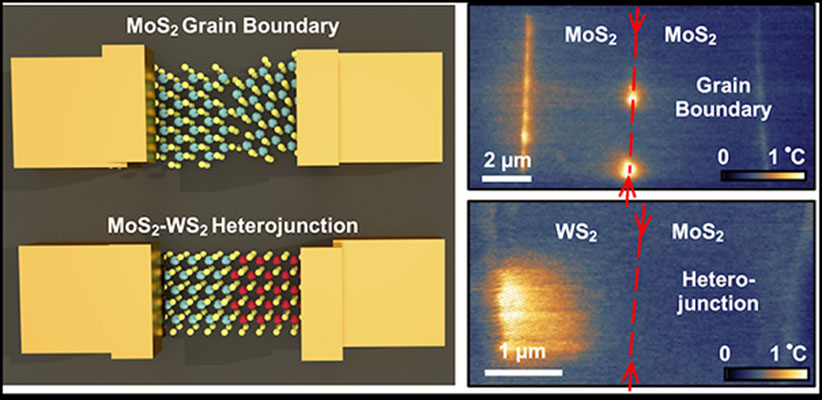VPD Group publishes article in Advanced Materials
Advanced Materials recently published an article co-authored by Prof. Vinayak Dravid and Gajendra Shekhawat as well as several other members of the VPD group and NUANCE titled, "Spatial Mapping of Hot‐Spots at Lateral Heterogeneities in Monolayer Transition Metal Dichalcogenides". Poya Yasaei and Akshay Murthy are first authors of this study, which examined the role interfaces within 2D play on heat dissipation properties within these systems.
In this study, the scientists use a specialized contact mode AFM technique, scanning thermal microscopy (SThM), that pairs topographical sample information with local temperature measurements. This method was used to examine heat transport across different interfaces that form when 2D TMDs are stitched together. The results indicate that interfaces between a set of two dissimilar materials do not appreciably cause localized heating. On the contrary, grain boundary interfaces that form when two similar materials coalesce together clearly localize heat and give rise to non-uniform current densities within the device. By coupling the SThM results with high-resolution scanning/transmission electron microscopy, it was determined that the interfacial atomic structure plays a crucial role in enabling uniform charge transport without inducing localized heating. As such, this work provides a framework for the larger device community regarding the types of interfaces that should be chosen or avoided for a particular application.
This particular work is of critical importance because the reduced dimensionality in these nanoscale systems yields larger power densities, which induce appreciable temperature rises that alters material parameters and dampens quantum phenomena. Gaining a complete understanding of how heat is dissipated in these materials is essential for future integration into device technologies.


